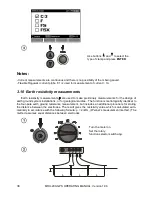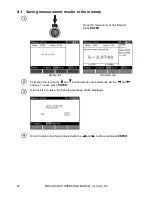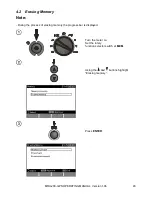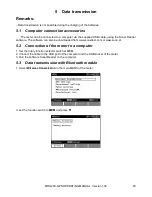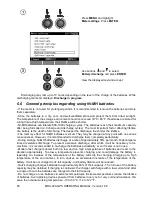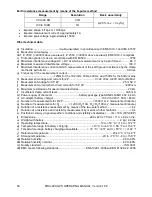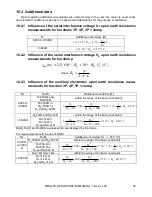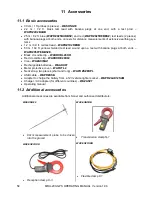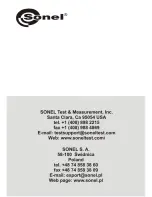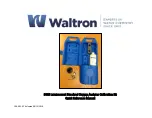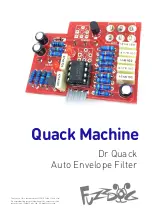
MRU-200-GPS OPERATING MANUAL Version 1.06
51
7
Cleaning and maintenance
NOTE!
Use only the maintenance methods specified in this manual.
The case of the meter may be cleaned with a soft, damp cloth using all-purpose detergents. Do
not use any solvents or cleaning agents which might scratch the casing (powders, pastes, etc.).
Clean the probes with water and dry them. Before probes are stored for a prolonged periods
grease them with any machine lubricant.
The reels and test leads should be cleaned with water and detergents, and dried.
The electronic system of the meter does not require maintenance.
8
Storage
Observe the following recommendations when storing the meter:
Disconnect all test leads from the meter.
Clean the meter and all its accessories thoroughly.
Wind the long test leads onto the reels.
Remove the batteries if the meter is stored for long periods.
To prevent total discharge of the batteries in prolonged periods of storage, re-charge them peri-
odically,
9
Dismantling and disposal
Disused, and scrap electric and electronic equipment should be separated and not be placed with
general waste of other types.
Disused, and scrap electric electronic equipment should be sent to a waste collection point in ac-
cordance with local regulations for the disposal of waste electric and electronic equipment, spent bat-
teries, and associated packaging.
Before the equipment is sent to a collection point, do not open or dismantle the equipment.
10 Technical data
The specified accuracy applies to meter terminals.
The abbreviation „m.v.” in the basic uncertainty definition means the measured value.
10.1 Basic data
Interference voltage measurement99 U
N
(RMS)
Range
Resolution
Basic uncertainty
0 to 100V
1V
±(2% m.v. + 3 digits)
measurement for f
N
15 to 450 Hz
frequency of measurements
– minimum two measurements/s


